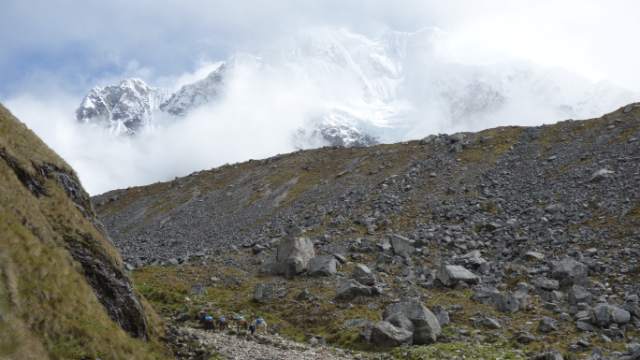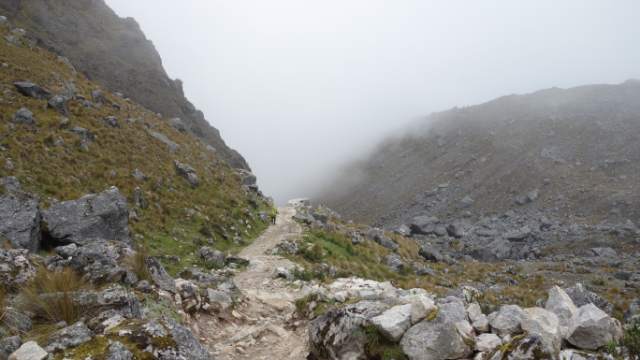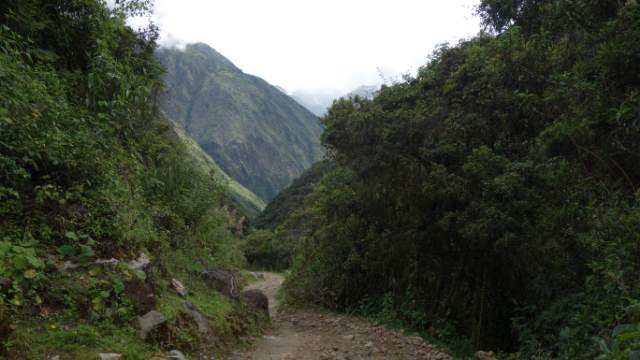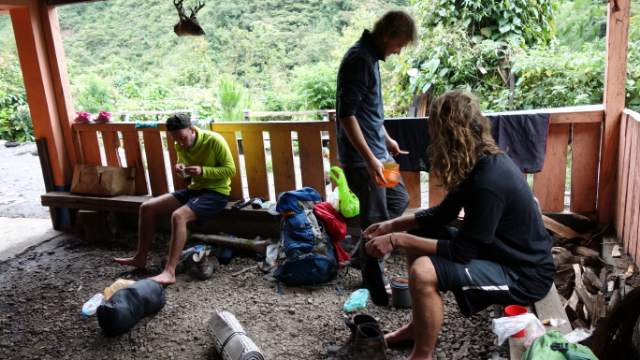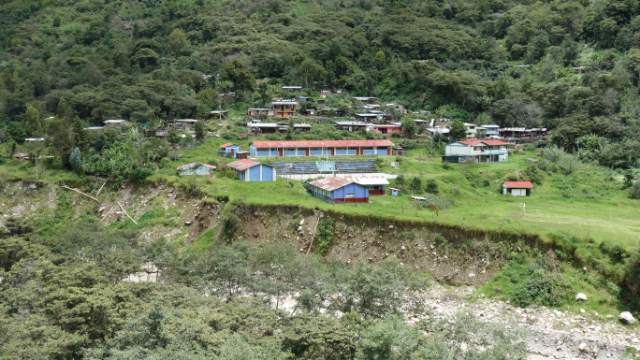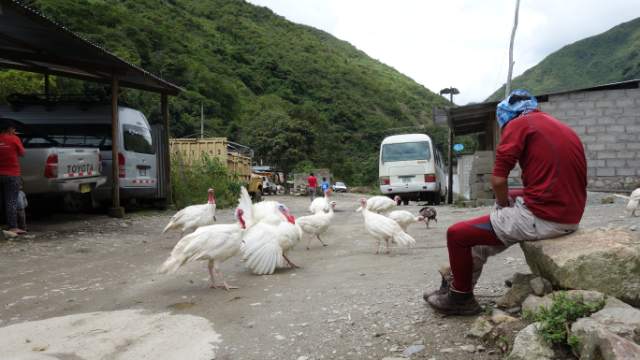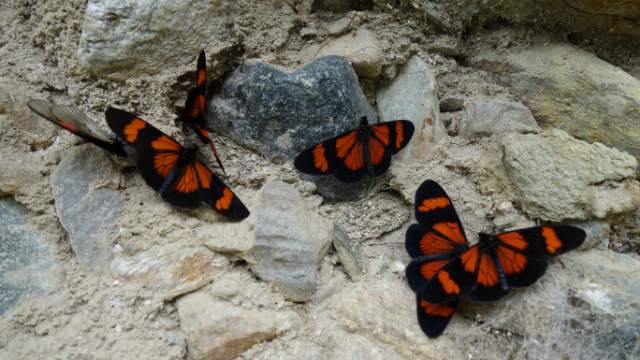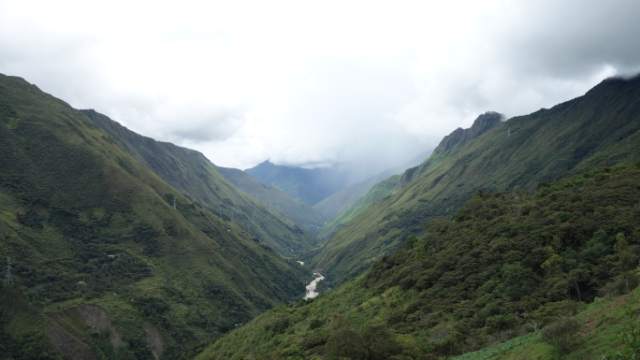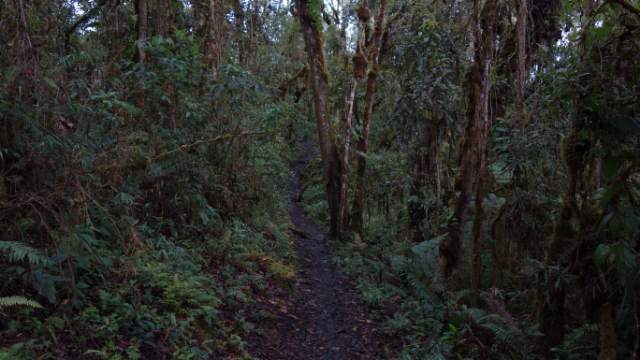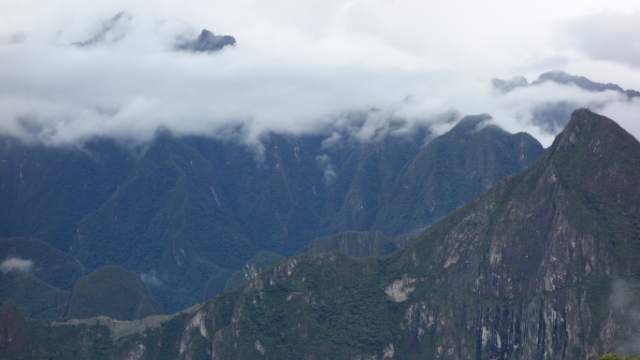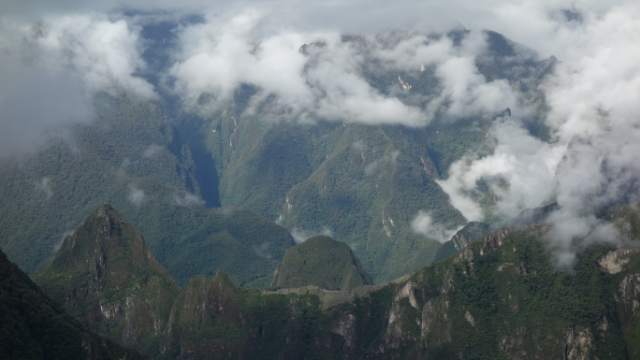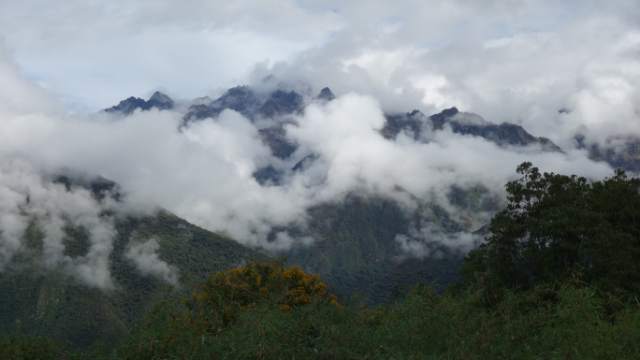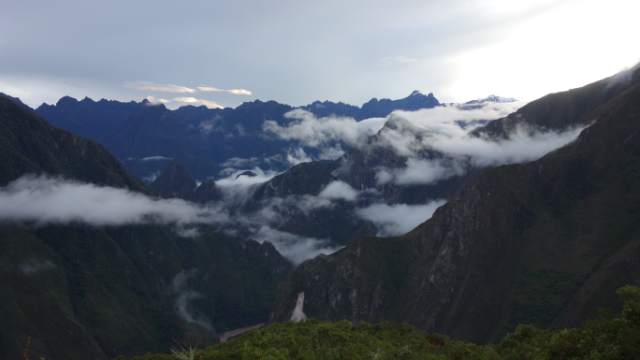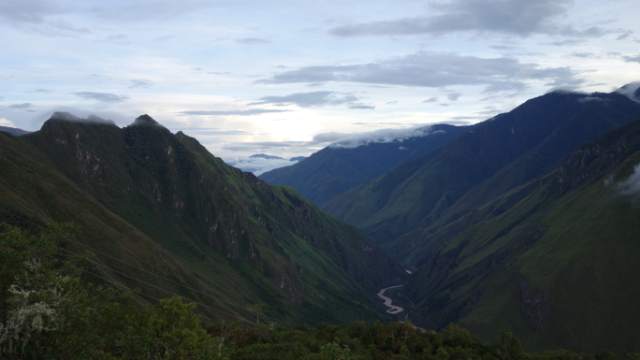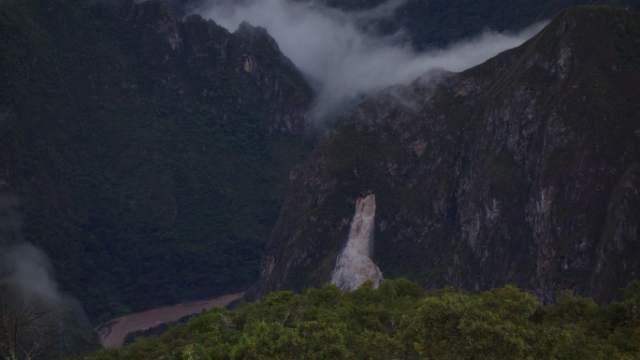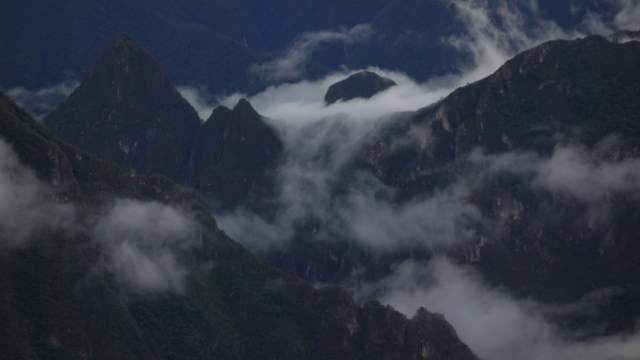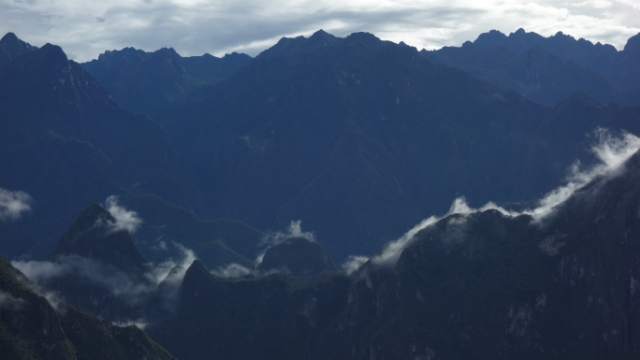After an overnight bus ride from Copacabana, Bolivia, we arrived to Cusco at 5am. It was time to get some coffee to get going, unfortunately, there was more sugar than coffee. It was heavily raining as we rode a cab to the city center to find a hostel. What a welcome! After being asked where we wanted to go, the taxi driver hit us with a classic Peruvian question: “When are you going to Machu Picchu?”
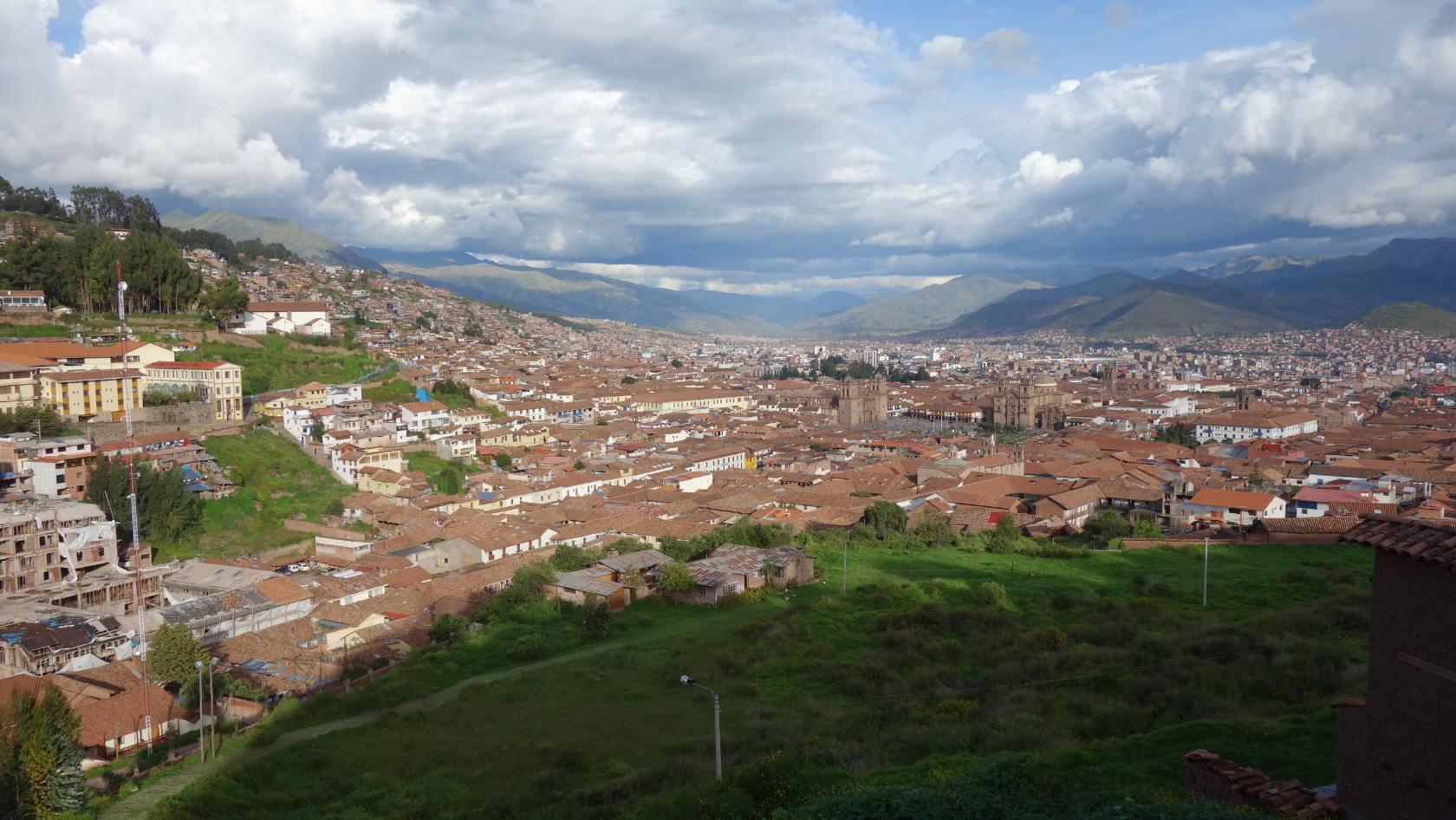
At the hostel, we decided to go on the Salkantay trek the next day altogether with two Dutch guys - Stef and Bart. As we were walking around the beautiful historical center of Cusco, we were asked the Machu Picchu question at least 5 more times. Anyway, we bought supplies at the central market including rice, tomatoes, onions, courgette, avocados for dinner, loads of dried fruits (inca berry, cranberries..) and peanuts for snack plus breakfast and 95° alcohol for cooking and were ready to go on the 4 day trek.
We took a minibus from the outskirts of Cusco and it was an extremely slow ride, some 3hrs because the driver’s smartphone got stolen while loading the luggage and he was trying to sort it out because everyone in the micro knew who did it- the guy with the sombrero!
Shortly before 6pm, we made it to Mollepata, from where the trek starts. Many locals stopped us, and where were we headed to help us with the directions - Peruvians seem like really nice people! We didn’t make it really far, only a couple of km above the town, but were really lucky to be allowed to camp at some farmer’s pampa (field) with access to running water! We cooked, drank grappa and soon went to sleep since it was dark and just started to rain.

The next day, we followed the dirt road, we walked all day some 25km and 2000m in elevation. Along the road were fields and crops (mainly corn) stretching all the way to 4000m! How Peruvians work the land is really incredible, they take the effort to work hardly accessible crops, demanding manual labour, which no one in Europe would be willing to do nowadays. Thanks to this, Peru’s landscapes look nicely maintained. After passing the hotel where the tourists slept, we went to a minimarket but didn’t buy anything since the prices were 10x higher than in Cusco! We slept at Salkantaypampa, where we found an old stone shelter giving us a good place to hangout during the night. I don’t know what was wrong with our combustible, but the rice took the longest ever in my life to cook - 2hrs!!! During the entire night, there was strong moonlight and as the clouds cleared away from the Salkantay mountain, we witnessed a splendid view on the shining Salkantay mountain in the middle of the night.
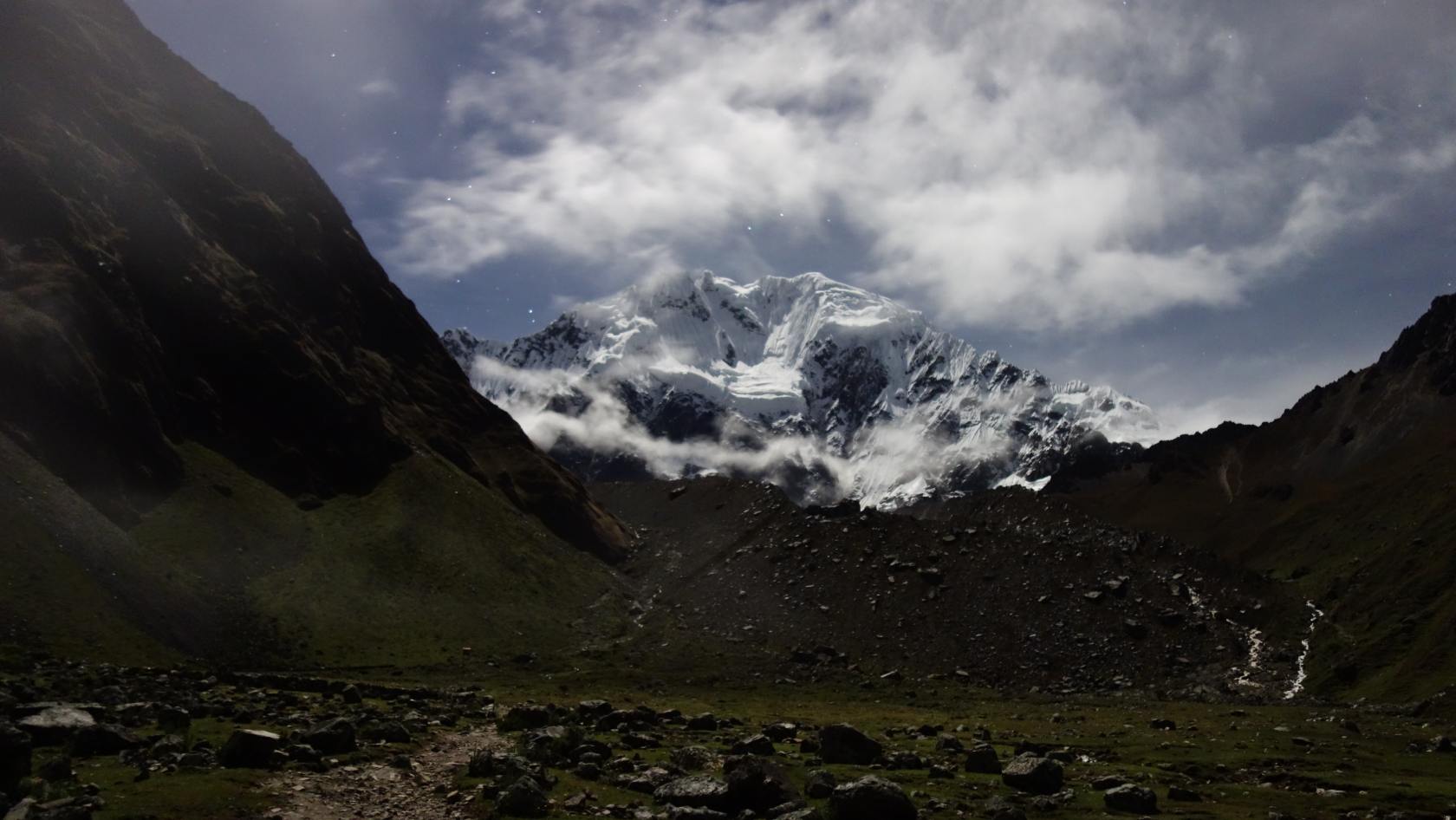
The next day, we found out we were sleeping at private property but managed not to pay. It was another 600m climb to the Salkantay pass and the tour groups were already on it, faster than us (they must have get up at 6am!). When we got to the pass, the Salkantay vanished in the clouds, it started raining and soon, we were drenched.
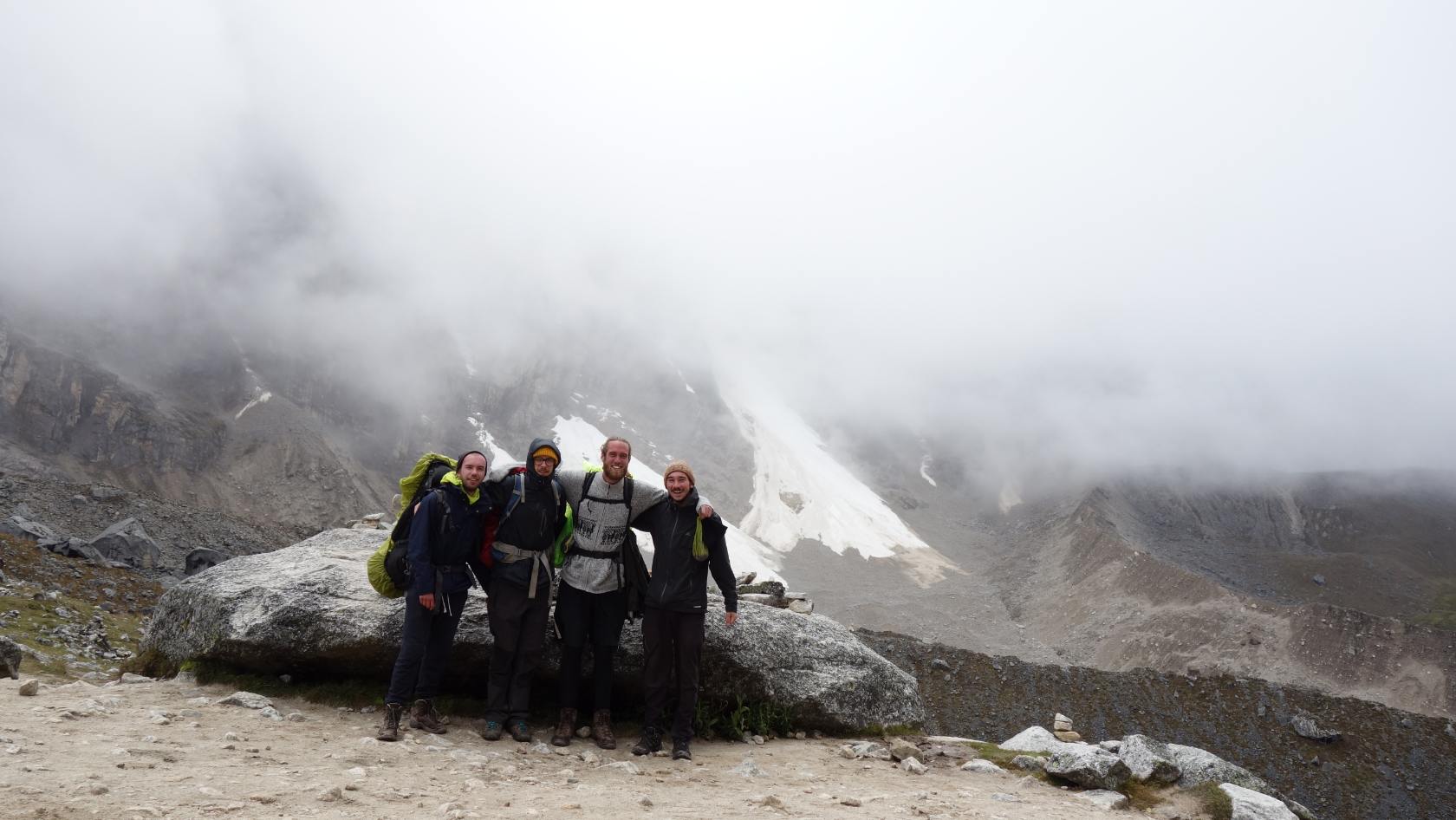
After the long descent from the pass down to the valley, we walked along the road for some 10km until we reached a point, where we were supposed to ride a sketchy cable car across the river to the campsite. It looked too dangerous, so we just carried on. After a short time, we got to a farmer’s house, asked if we can spend the night there and he took us to a roofed patio. We were invited to drink Coca tea with him, so nice! From our chat, we learned the running of Machu Picchu was privatised as many other national monuments by Chileans, that most big enterprises come from Chile as well decimating Peruvian businesses, that they had no electricity although high voltage cables were just on the other side of the valley. But the guy didn’t complain, he was happy, growing everything from potatoes, mandioca (yuga) to passion fruits, sending the produce to Cusco.

In the morning, it became apparent why he was happy where he was. All the tour operators brought tourists to his farm for a break to taste passion fruits, honey and whatever else. The guy wasn’t making bad money! We continued along the big road for the other side of the valley had massive landslides and the trail there was closed. We were making the last section of the trek, across a mountain. This turned out to be quite nice, there were avocados along the trail (I took 3 although they were ripe 2 wks later) as well as passion fruits. On the top of the mountain, some workers were building a new lodge.
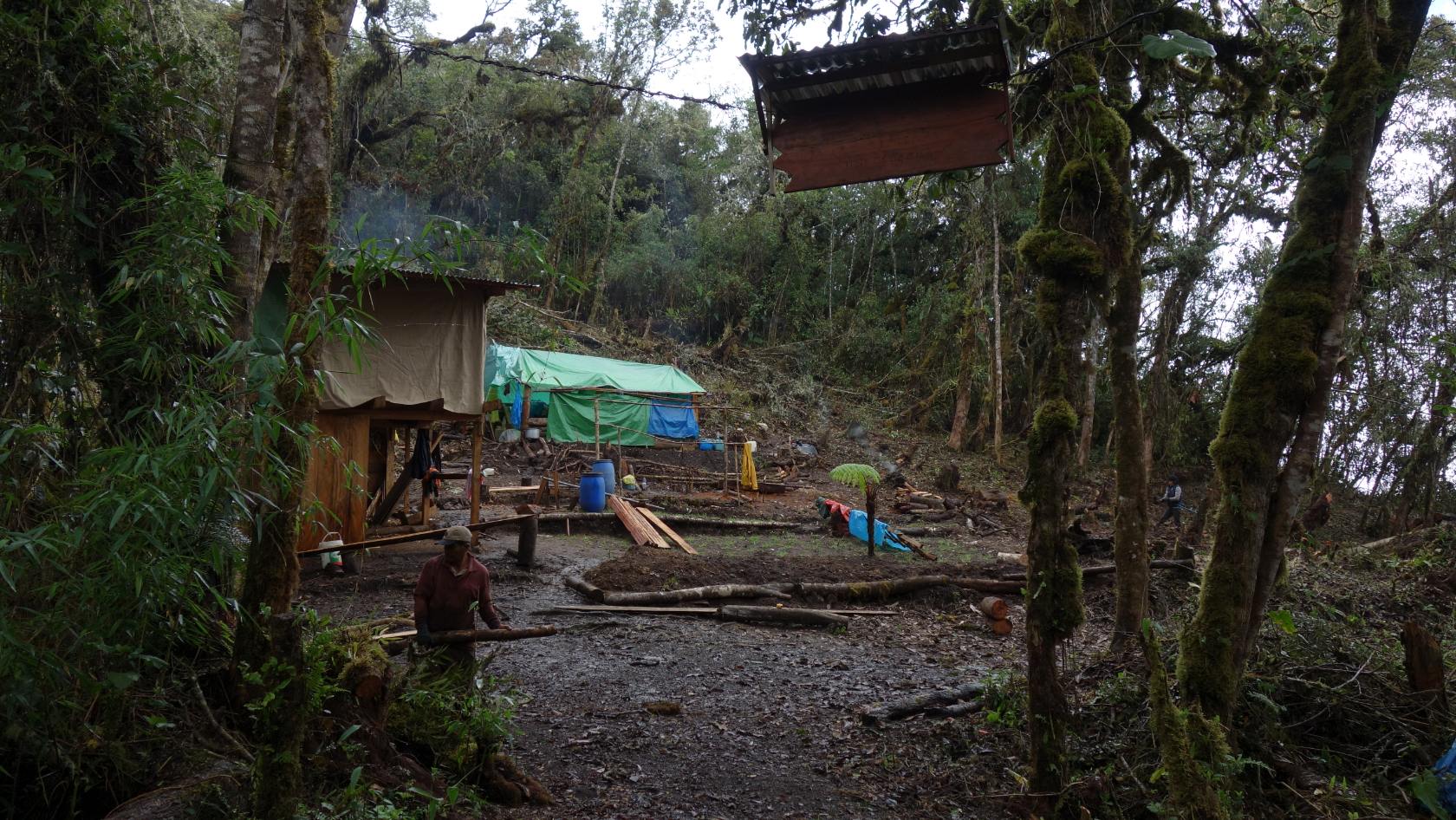
Further down were some not that famous Inka ruins, but there it was, the view on Machu Picchu and the surrounding mountains - it was majestic. First on the clouds, then with sun shining on the ruins, later with a rainbow that emerged behind the mountain. This really was superb, a definite highlight of the trip :) We camped out a little further down with exactly the same view. We also spent our last money, we had nothing.
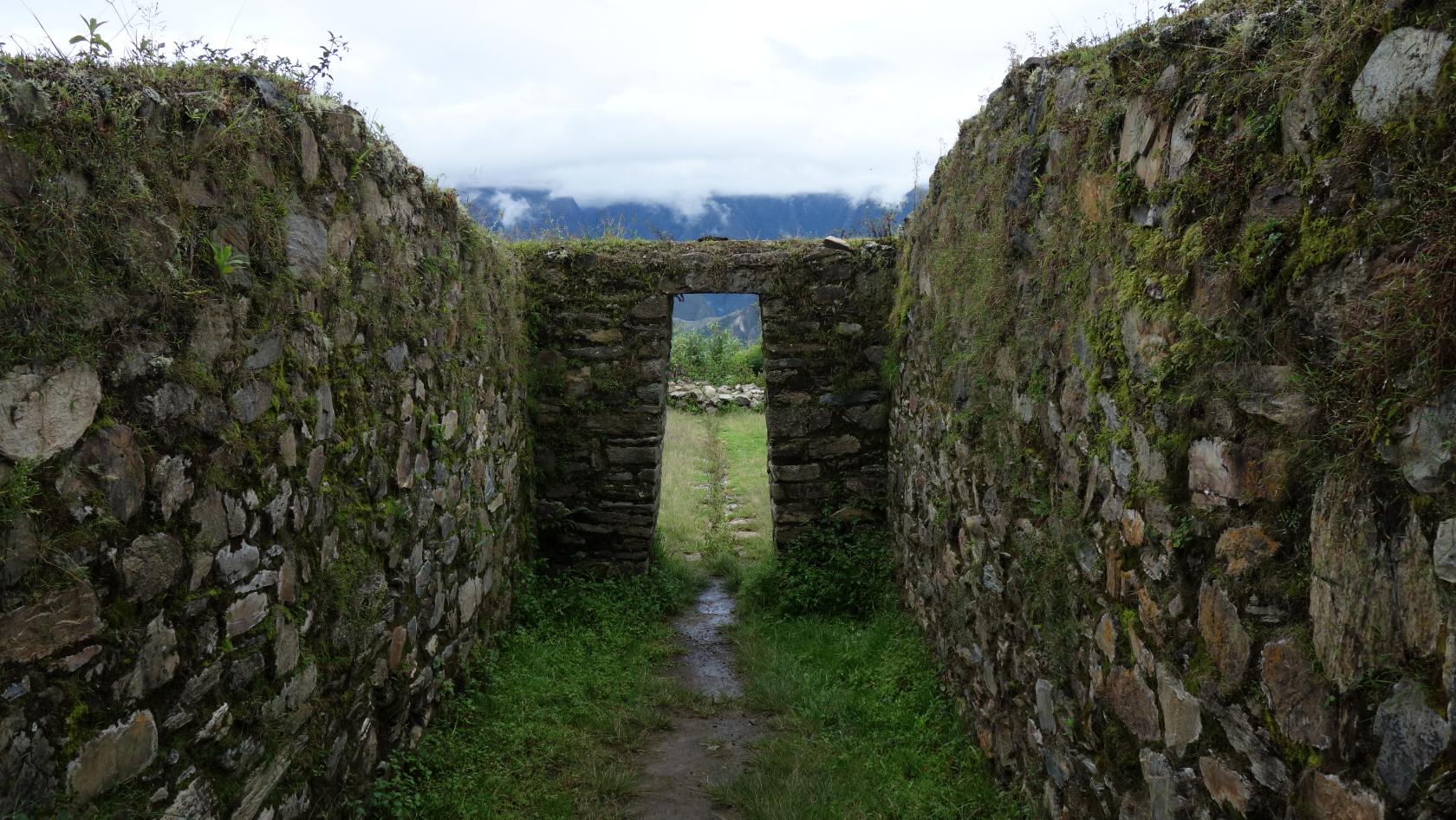
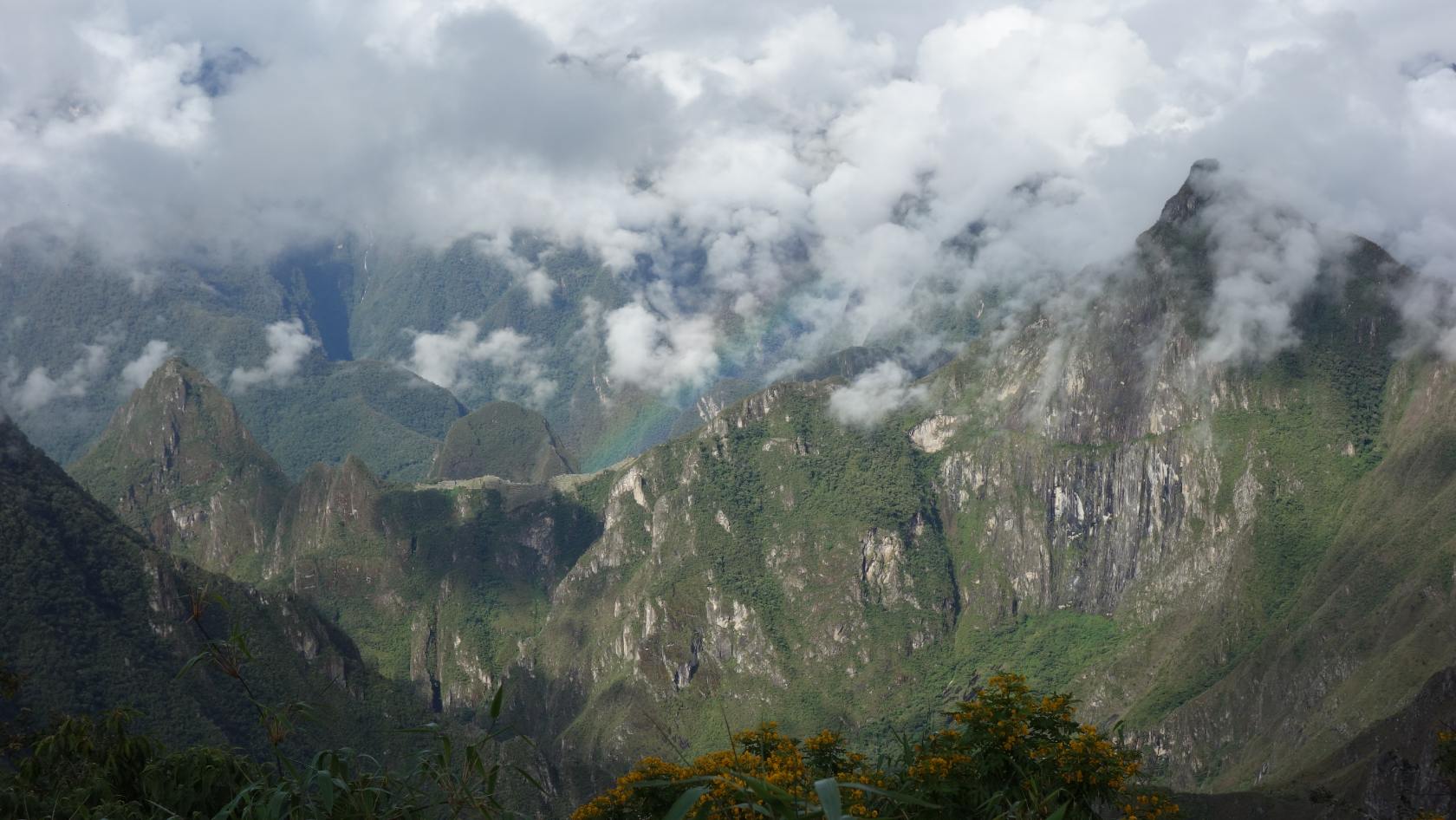
The next day, it was only going down a muddy slope, snacking on wild strawberries and bananas! We met some locals trying to find their lost cow. Eventually we got to Santa Theresa, an ugly town, from where we should get to Cusco. But we found there are only taxis going to Santa Maria, nothing direct to Cusco and we had no money to pay it.. Shit! But the taxi driver came with a solution - he’ll drive us to Santa Maria and will get money from the micro, which we’ll pay in Cusco. It worked and we were on our way in one of the scariest rides of our life - the locals trust the cars too much, don’t brake on time and go twice over the speed limit!
So why didn’t we go to Machu Picchu even though we were so close? It is expensive to go (130 soles or €35), the money is not even going to Peru, you are there among thousands of other people (apx. 2500 people per day), we saw it from far plus you can visit less famous sites for less money and with less people! So instead of doing this tourist trap, we went for Choquequirao, which was absolutely amazing - more about it in the next article!

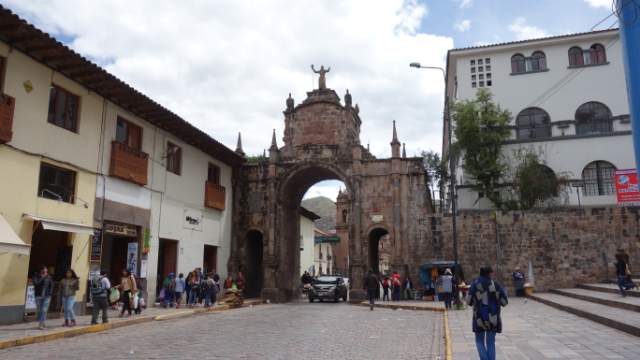


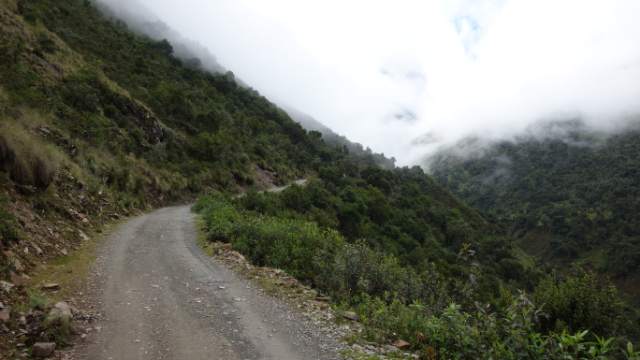



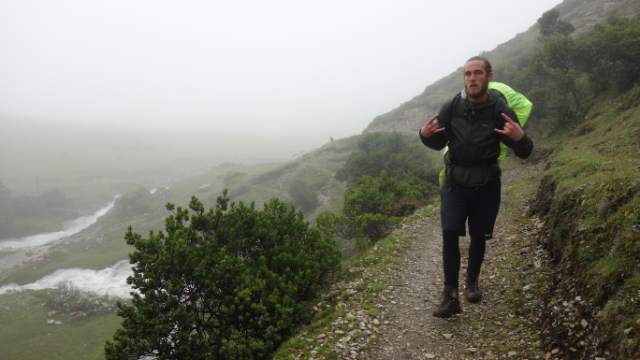

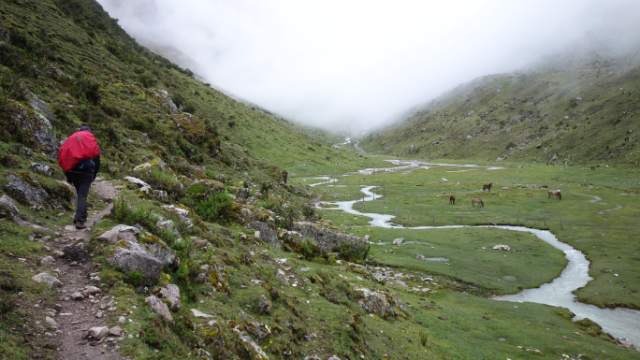
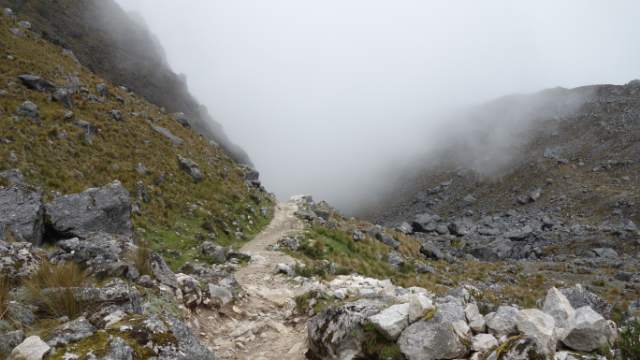





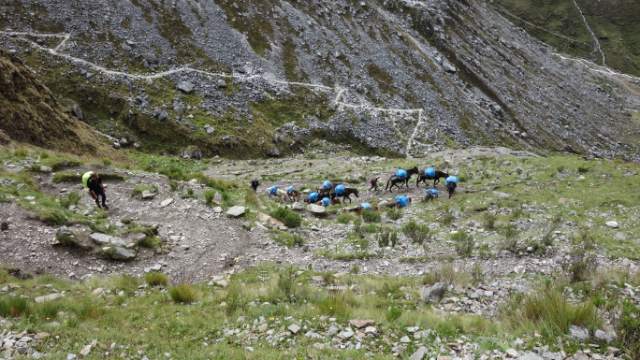
.jpg)
